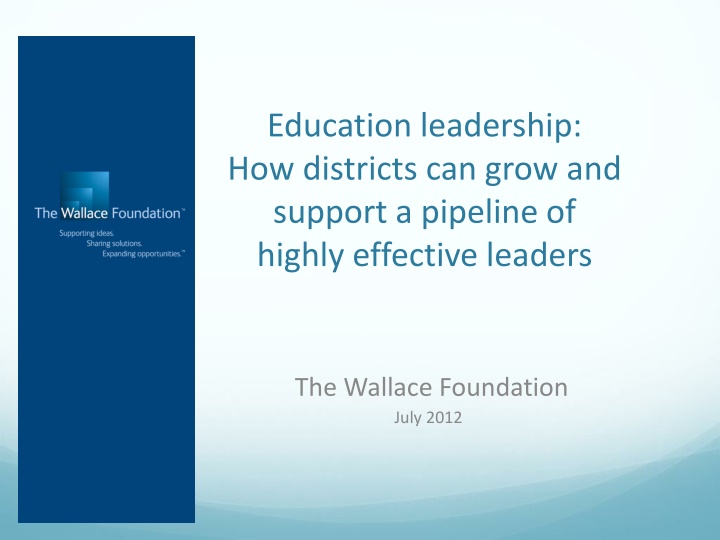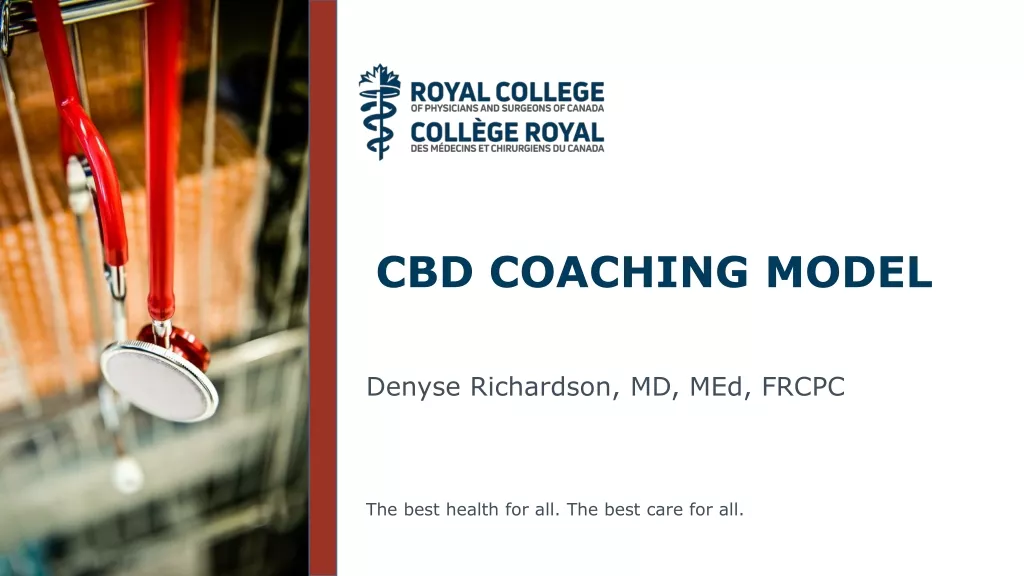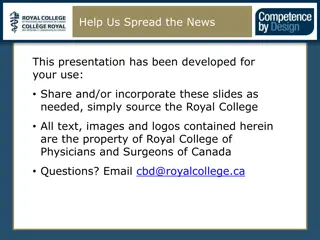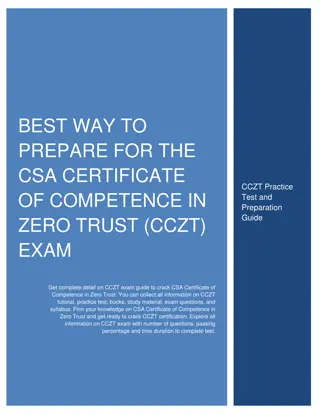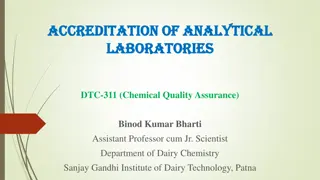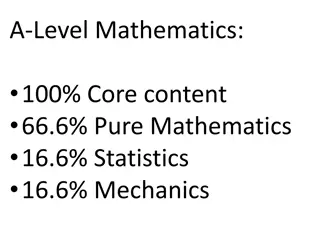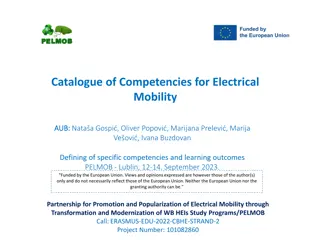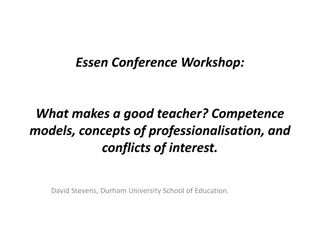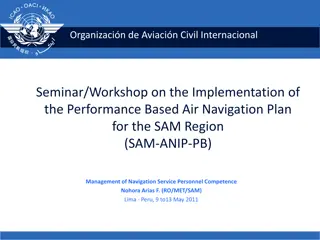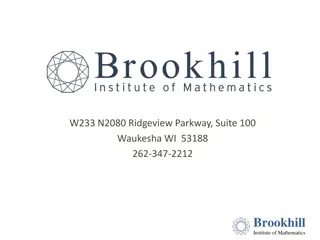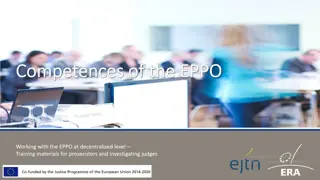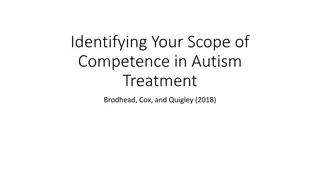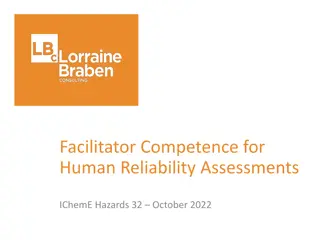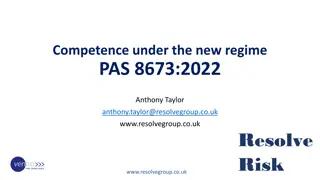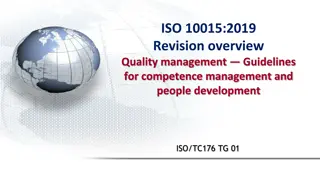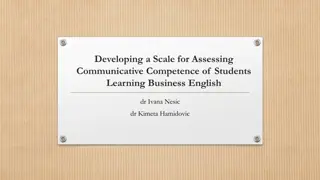Professional Competence in Mathematics Education: Individual vs Community
In the realm of mathematics education, the debate regarding where professional competence truly resides - within the individual teacher or the broader educational community - is a matter of ongoing discussion. Exploring the nuances of teacher competence, professional development frameworks, and the strengths and weaknesses of individual vs group perceptions can shed light on this complex issue.
Download Presentation

Please find below an Image/Link to download the presentation.
The content on the website is provided AS IS for your information and personal use only. It may not be sold, licensed, or shared on other websites without obtaining consent from the author.If you encounter any issues during the download, it is possible that the publisher has removed the file from their server.
You are allowed to download the files provided on this website for personal or commercial use, subject to the condition that they are used lawfully. All files are the property of their respective owners.
The content on the website is provided AS IS for your information and personal use only. It may not be sold, licensed, or shared on other websites without obtaining consent from the author.
E N D
Presentation Transcript
Education leadership: How districts can grow and support a pipeline of highly effective leaders The Wallace Foundation July 2012
Contents 1. Recap of Wallace education leadership initiative 2000-2010 2. The role of the principal: Practices of effective principals 3. The importance of leader training: Five lessons 4. The unanswered question and therefore our new theory of action 5. The principal pipeline initiative 2
Wallaces education leadership initiative: 2000-2010 Our strategies: 24 states; 15 main urban districts Commissioned research to fill knowledge gaps and evaluate across sites Professional learning communities for states, districts, partners Resulting in: Over 70 research reports 140 sustained, high quality initiatives (including 24 pre-service training programs) 15 new non-profit organizations 3
The school principal as leader: What we have learned 4
Leadership is key to improving teaching & learning Leadership is second only to classroom instruction among all school related factors that contribute to what students learn at school. -- How Leadership Influences Student Learning, Kenneth Leithwood, et al, University of Minnesota, University of Toronto, 2004 Six years later we are even more confident about this claim. -- Learning from Leadership: Investigating the Links to Improved Student Learning, Louis, et al, 2010 5
Leadership is crucial to making school reform succeed There seems little doubt that both district and school leadership provides a critical bridge between most educational reform initiatives, and having those reforms make a genuine difference for all students. -- How Leadership Influences Student Learning, 2004 6
Especially in difficult situations there are virtually no documented instances of troubled schools being turned around without intervention by a powerful leader. -- How Leadership Influences Student Learning, 2004 7
Effective principals are key to retaining good teachers It is the leader who both recruits and retains high quality staff. Indeed, the number one reason for teachers decisions about whether to stay in a school is the quality of administrative support and it is the leader who must develop this organization. -- Preparing School Leaders for a Changing World, Linda Darling-Hammond, et al, Stanford University, 2007 8
What effective principals do Shape a transformational vision of academic success for all students Create a hospitable climate Cultivate leadership in others Lead the leadership team Lead the professional learning community Manage people, data and processes All in the service of improving instruction Source: The School Principal as Leader: Guiding Schools to Better Teaching and Learning, January 2012 9
How leaders improve instruction Share decision-making Principals are most effective when they see themselves as working collaboratively towards clear, common goals with district personnel, other principals and teachers Sharing leadership increases credibility doesn t diminish it Balance clear expectations with fair accountability measures Lead the professional learning community the most direct means of improving instruction at all levels Lead the leadership team Create a common learning agenda among all staff Provide support and clear expectations for teachers High performing schools leaders both set the climate of high expectations and lead instruction This is all most difficult at the high school level 10
Leader preparation is important and cost effective 11
Effective preparation programs make a difference Graduates of effective programs are: Better-prepared Perform better in high-needs schools Twice as likely to actually become principals (60 percent vs. 20-30 percent) And ... can improve instruction in their schools Graduates of the NYC Leadership Academy which incorporates the above practices were placed in extremely low-performing schools and improved their schools academic performance at higher rates than other new principals in English-language arts and mathematics. -- The New York City Aspiring Principals Program: A School-Level Evaluation, New York University, 2011 12
Improving principal preparation is a cost-effective strategy Superintendents and principals are the leaders with the most influence in schools. Efforts to improve their recruitment, training, evaluation and ongoing development should be considered highly cost-effective approaches to successful school improvement. -- How Leadership Influences Student Learning, 2004 13
Elements of effective leader preparation programs Based on research-based leader standards A more selective process for choosing candidates based on the needs of the districts Training that prepares them to lead improved instruction and school change, not just manage buildings Robust, paid internships High-quality mentoring and professional development tailored to individual and district needs Following up on the progress of graduates Source: Preparing School Leaders for a Changing World, Linda Darling- Hammond, et al, Stanford University, 2007 14
The state role in strengthening leader preparation programs 15
Steps states can take to strengthen leader preparation Set standards for preparation programs Accredit and reaccredit preparation programs Define requirements for leader certification Define and fund requirements for mentoring of new principals Offer financial support for highly-qualified candidates 16
Why the district role is important Both our qualitative and quantitative evidence indicate that district priorities and actions have a measurable effect on professionals at the school level. Leaders in higher performing districts communicated explicit expectations for principal leadership and provided learning experiences in line with these expectations They also monitored principal follow-through and intervened with further support where needed. - Wahlstrom, et al, Executive Summary of Research Findings, 2010 18
Key steps districts can take Clearly define standards for principals and for types of principals (such as elementary, middle, high, turnaround ) Define accountability and leader evaluation measures and gives principals the authority and support to achieve them Be an active consumer of leader preparation programs to ensure high quality candidates Place and retain effective principals in the highest needs schools Provide timely, relevant data to enable principals to accurately diagnose and address students learning needs Use leader evaluation to focus more attention on their role on improving instruction Provide time for principals to focus on instruction Design and implement a pipeline to develop, train, place and support effective principals for all schools 19
Wallaces principal pipeline initiative 20
The theory of action When an urban district and its principal training programs provide large numbers of talented, aspiring principals with the right pre-service training and on-the-job evaluation and support . .the result will be a pipeline of principals able to improve teaching quality and student achievement district-wide. 21
Putting it all together: a principal pipeline High- quality aspiring leader training programs Evaluation and on- the-job support Leader standards Selective hiring That are all: High quality Aligned In support of district reform agenda District-wide scale 22
Leader standards Districts and training programs adopt clear standards for principals based on the effective leader characteristics that research has identified such as: ISLLC 2008 VAL-ED Gallup 23
High-quality leader preparation Selective recruitment of candidates Focus on improving instruction, not just managing buildings. Includes internships where candidates lead instructional work Districts exercising their consumer power so graduates better meet their needs States use their power to set standards for program accreditation, principal certification and financial support for highly qualified candidates In a principal s early years on the job, have high-quality mentoring and professional development tailored to individual and district needs Source: The Making of the Principal: Five Lessons in Leadership Training (The Wallace Foundation, June 2012) 24
Making smart hires Rigorous selection process for filling principal and assistant principal job openings with most qualified applicants Preference to graduates of high-quality programs Placing them in schools based on the best fit and match between the candidate and available vacancies Source: Districts Developing Leaders: Lessons on Consumer Actions and Program Approaches from Eight Urban Districts, Education Development Center, 2010 25
Evaluation and on-the-job support for new principals Evaluations that reflect leader standards, measure those behaviors as well as school and student outcomes Professional development based on needs assessed by the evaluation; value placed on continuous improvement Carefully selected, well trained mentors working with new principals for at least one year, preferably more Supported by state and local funding that ensures mentors receive high quality training and appropriate stipends 26
The principal pipeline initiative is supported by: An independent evaluation by Policy Studies Associates and RAND with six public reports the first will be released in second quarter 2013 Professional learning communities for grantees (in-person meetings, webinars, on-going project group work) Technical assistance across all participating districts Tools to help implement the research and lessons 27
For these and other resources on leadership and other topics: www.wallacefoundation.org 28
The Wallace Foundation seeks to support and share effective ideas and practices that will strengthen education leadership, arts participation and out-of- school learning. For a digital library of the publications cited here on education leadership, as well as others, visit the online Knowledge Center at www.wallacefoundation.org The Wallace Foundation 5 Penn Plaza, 7th Floor New York, NY 10001 212-251-9700 Telephone Info@wallacefoundation.org www.wallacefoundation.org
